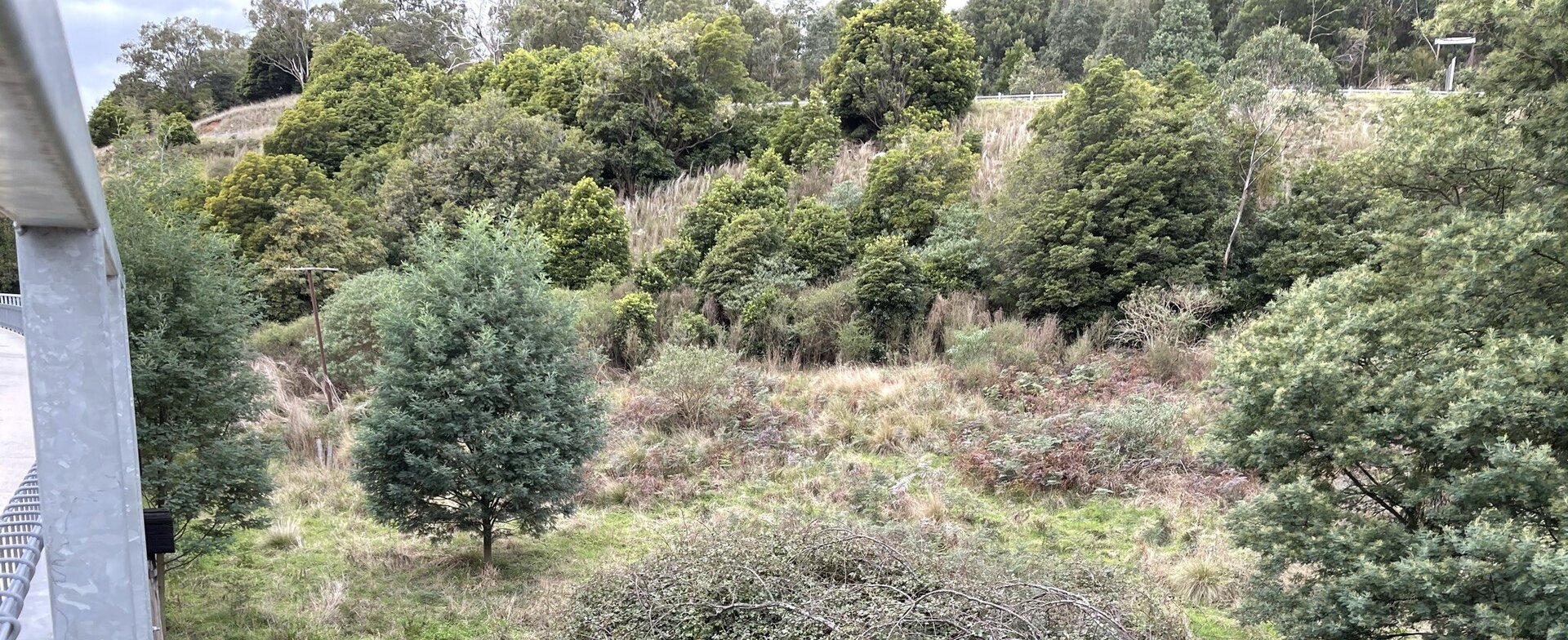Linking the old and new South Gippsland Highways by restoring the Apple Tree Wetlands
About the project
This project will link the remnant vegetation on the South Gippsland Highway at Koonwarra with the Apple Tree Wetland on the Tarwin River and remnant vegetation beside the new South Gippsland highway alignment by targeted weed control and revegetation. This will create a continuous corridor of high quality native vegetation between the two aspects of the South Gippsland Highway.
The Apple Tree Wetland is adjacent to the new highway realignment but is outside the realigned highway footprint. By restoring this area, connectivity will be created between the remnants on the side of the old highway, the revegetation that will be planted after the removal of the old highway, and the riverside vegetation adjacent to the new road alignment.
The project site is weedy and degraded and this project will remove the weeds and replace them with endemic vegetation, improving habitat and connectivity for animals and birds. The project site is bisected by the Great Southern Rail trail and includes an historic trestle bridge. Revegetation plant species will be chosen that not only support the environment but also enhance the experience of rail trail users. The Apple Tree Wetlands are part of the Nerrena Tarwin Valley Landcare group’s Black Spur Creek Wetlands project which seeks to protect and restore endangered Swampy Riparian Woodland and vulnerable Damp Heathy Woodland which includes Strzelecki gums, a nationally threatened species, along the section of rail trail containing the three creek and river crossings.
The 2021 Gippsland Transport Environmental Projects Pilot Program gives the Landcare group the opportunity to restore the Apple Tree Wetlands, named after a venerable old apple tree beside the rail trail, by removing the noxious woody weeds and replanting indigenous vegetation. Restoring the vulnerable Strzelecki Gum woodland, remnants of which remain on the roadside, will increase habitat and connectivity across the landscape. The restored wetland will provide a wide range of services including flood mitigation, improved water quality, and amenity. This project links the remnant vegetation between the current South Gippsland Highway, the new South Gippsland Highway, and the Tarwin River creating landscape connectivity and habitat for birds, animals and plants.
Why we are removing the weeds
The woody weed species in the area consists of Willow, Sweet Pittosporum, Broom, Hawthorn and Blackberry. Tradescantia is present on the southern riverbank adjacent to the South Gippsland Highway. By removing these weeds and replanting selectively the canopy and understory will be restored. This will allow birds and animals to move through the landscape from the current roadside to the new roadside and also connect to the vegetation on private properties adjacent to the road. Landcare group members have spent many years developing revegetation projects on adjoining land to foster waterway and steep site protection as well as landscape connectivity.
The roadside vegetation provides an important wildlife corridor and, as much of it was never cleared, a reservoir of endemic plants and genetic diversity. Regretfully the Pittosporum is threatening this biodiversity as the thick canopy of this species shades out understory plants and suppresses tree succession, especially Eucalypts. In other areas not very far from the project site, the roadside has become a Pittosporum monoculture. We wish to avoid this happening here. Many of the existing Strzelecki and Manna Gums show signs of regression and stress. Our project will remove the smothering and competing weeds and replant with endemic species grown in a local community nursery with seed collected from the project area. The old growth trees will be protected and become part of a woodland again.
The roadside abutting the new South Gippsland Highway has degraded native vegetation and this project will address this. Views from the new elevated road across the wetland and surrounds will be enhanced. Importantly, wildlife will be encouraged to move under the road thus enhancing safety.
Replanting the site
We will restore 1.8 hectares of Swampy Riparian Woodland by planting 3500 stems which includes 0.2 hectares of flood plain that will be planted with suitable low growing grasses, sedges and other graminoids. This will allow sight lines from the trestle bridge to be maintained and preserve the visual character of the area whilst restoring the wetland with appropriate plants. 500 stems to restore the Damp Heathy Woodland/ Lowland/Riparian forest mosaic will supplement the remnant vegetation in the 0.75 hectares of this EVC.
Species
Eucalyptus obliqua Messmate Stringybark
Eucalyptus viminalis ssp. viminalis Manna Gum (we have collected seed locally)
*Eucalyptus strzeleckii Strzelecki Gum
Eucalyptus globulus Blue Gum (found on the road works site from collected seed)
*Acacia dealbata Silver Wattle
*Acacia melanoxylon Blackwood
Acacia verticillata Prickly Moses
Acacia mucronata Narrow-leaf Wattle
Bursaria spinosa subsp. spinosa Sweet Bursaria
*Melaleuca ericifolia Swamp Paperbark
Leptospermum lanigerum Woolly Tea-tree
Leptospermum continentale Prickly Tea-tree
Olearia lirata Snowy Daisy-bush
Coprosma quadrifida Prickly Currant-bush
Prostanthera lasianthos Victorian Christmas-bush
Gynatrix pulchella s.l. Hemp Bush
*Melicytus dentatus s.l. Tree Violet
Goodenia ovata Hop Goodenia
*Polyscias sambucifolia Elderberry Panax
Olearia argophylla Musk-Daisy Bush
Pomaderris aspera Hazel Pomaderris
Ozothamnus ferrugineus Tree Everlasting
Goodia lotifolia Golden Tip
*Carex appressa Tall Sedge
*Carex iynx Golden-Brown Sedge
Gahnia sieberiana Red-fruit Saw-sedge
Dianella tasmanica Tasman Flax-lily
Lepidosperma elatius Tall Sword-sedge
*Juncus procerus Tall Rush
*Juncus pallidus Pale Rush
Lomandra longifolia Spiny-headed Mat-rush
Poa labillardierei Common Tussock-grass
*for wet areas
Project partners- thanks for your help and support


